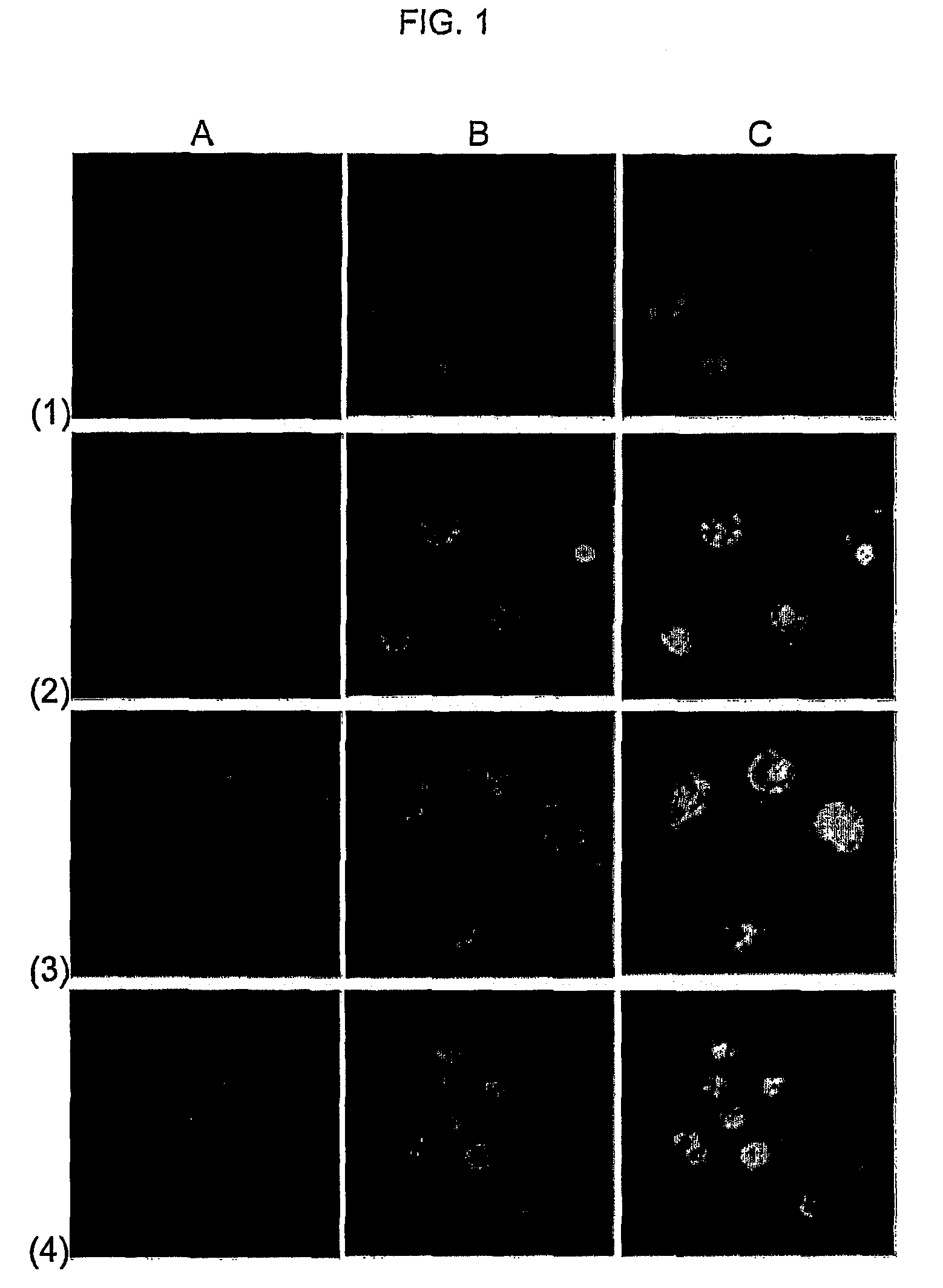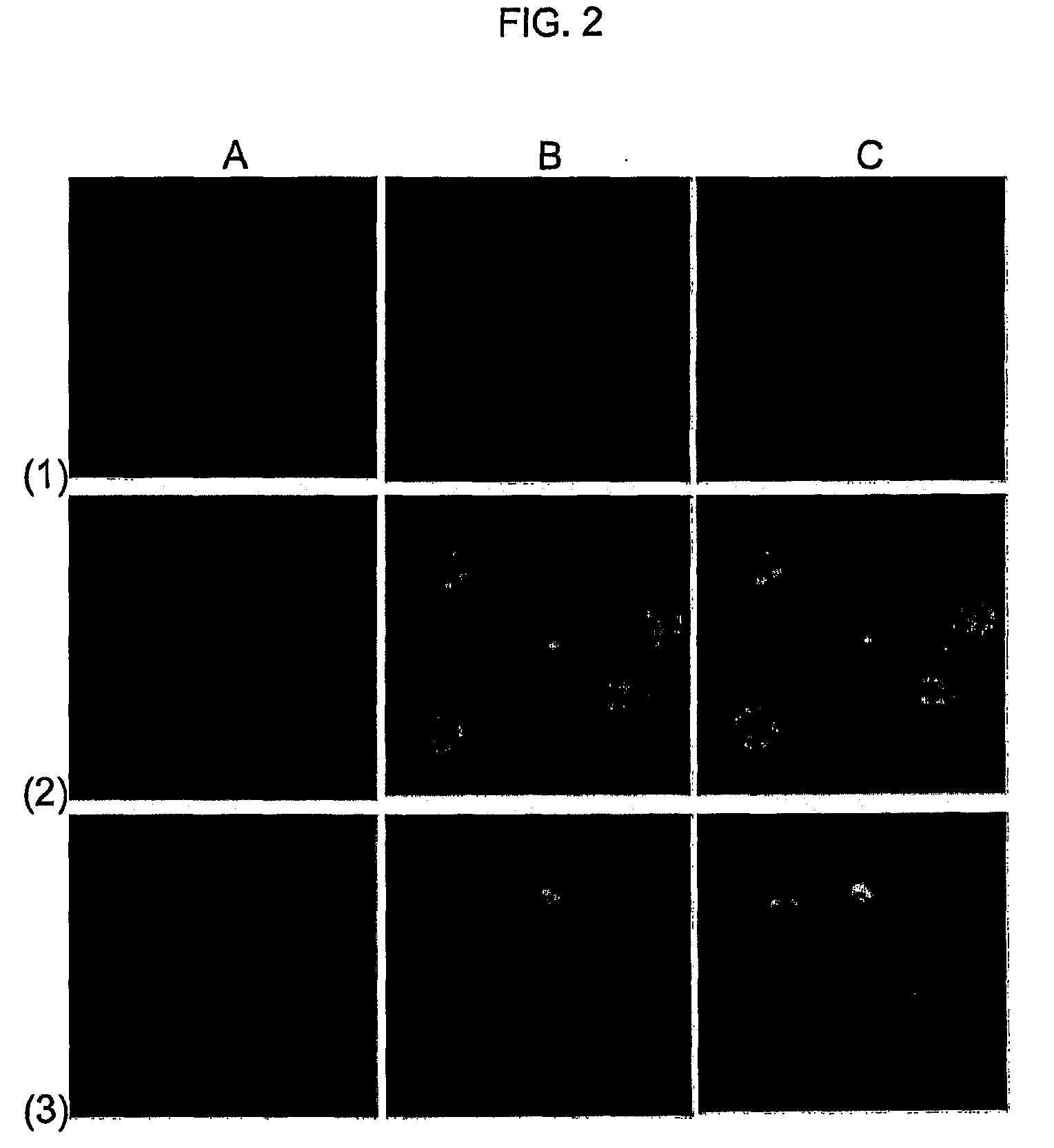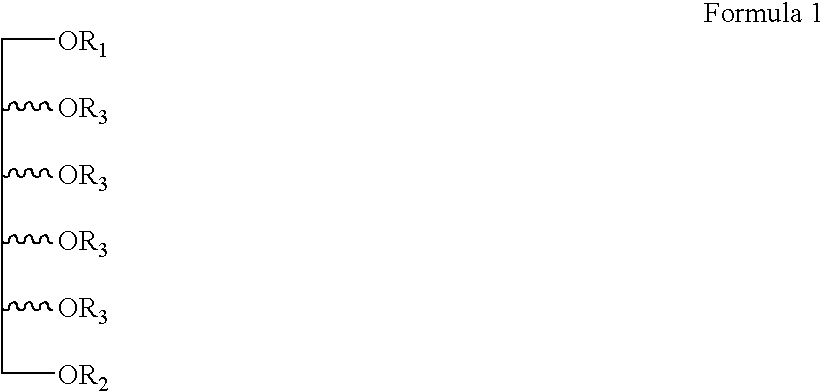Molecular Transporters Based on Sugar and Its Analogues and Processes For the Preparation Thereof
a technology of sugar and transporters, applied in the field of molecular transporters, can solve the problems of easy water soluble or biodegradable, easy precipitation in a cell to illicit toxicity, and problems of rapid metabolism, and achieve the effect of improving permeability
- Summary
- Abstract
- Description
- Claims
- Application Information
AI Technical Summary
Benefits of technology
Problems solved by technology
Method used
Image
Examples
preparation example 1
Preparation of sorbitol having protecting groups
Introduction of trityl protecting group to α-D glucose
[0082]
[0083]α-D-Glucose(10 g, 55.5 mmol) was dissolved in 120 ml of dry pyridine, and triethylamine(38.7 ml, 277.5 mmol) was added thereto. Tritylchloride(18.3 g, 65.5 mmol) was added dropwise to the mixture, and the mixture was stirred for a day. After the reaction was completed, the reaction mixture was diluted with dichloromethane(CH2Cl2, 250 ml) and washed with saturated NaHCO3 (300 ml). The organic layer thus obtained was dried over Na2SO4, concentrated under a reduced pressure, and purified by column chromatography (ethyl acetate:n-hexane=2:3 to 1:1 to 3:2), to obtain the title compound as a light brownish solid(16.87 g).
[0084]1H-NMR(CD3OD): δ 3.25-3.38(m, 4H), 3.59(t, J=9.2 Hz, 1H), 3.94(m, 1H), 5.13(d, J=3.7 Hz, 2H), 7.11-7.30(m, 9H), 7.42(d, J=9.4 Hz, 6H)
[0085]MS (FAB) m / z 445.22(M++Na)
Preparation of sorbitol from the protected α-D-glucose
[0086]
[0087]The compound obtained...
preparation example 2
Preparation of aminocaproic acid derivative having carbobenzoxy protecting groups (I)
Preparation of N-di-cyanoethylated 6-aminocaproic acid
[0093]
[0094]An excess amount of acrylonitrile(94.1 ml, 1.43 mol) and glacial acetic acid(21.8 ml, 0.381 mol) were added dropwise to 6-aminocaproic acid(2.5 g, 0.019 mol), and the mixture was refluxed for 30 hrs. The residual acrylonitrile left over from the reaction was removed by evaporating under a reduced pressure, and acetic acid was removed by repeated cycles of adding toluene and evaporating under a reduced pressure. The reaction mixture was diluted with 200 ml of ethyl acetate and washed with water several times. The organic layer thus obtained was dried over Na2SO4, concentrated under reduced pressure, and purified by column chromatography (ethyl acetate:n-hexane=4:1), to obtain the title compound as a sticky brownish syrup(3.5 g).
[0095]1H-NMR(CDCl3): δ 1.35-1.49(m, 4H), 1.65(t, J=7.5 Hz, 2H), 2.36(t, J=7.3 Hz, 2H), 2.46-2.84(m, 6H), 2.8...
preparation example 3
Preparation of aminocaproic acid derivative having carbobenzoxy protecting groups II
Preparation of N-di-methylacrylated 6-aminocaproic acid
[0105]
[0106]An excess amount of methyl acrylate(77.3 ml, 0.857 mol) and glacial acetic acid(13.1 ml, 0.228 mol) were added dropwise to 6-aminocaproic acid(1.5 g, 0.0114 mol), and the mixture was refluxed for 30 hrs. The remaining methyl acrylate and acetic acid after the reaction were removed by evaporating with added toluene under a reduced pressure. The reaction mixture was diluted with 200 ml of ethyl acetate and washed several times with water. The organic layer thus obtained was dried over Na2SO4, concentrated under a reduced pressure, and purified by column chromatography (ethyl acetate:n-hexane=4:1), to obtain the tile compound as a viscous brownish syrup(1.85 g).
[0107]1H-NMR(CDCl3): δ 1.30-1.62(m, 6H), 2.30(t, J=7.4 Hz, 2H), 2.50(t, J=6.8 Hz, 6H), 2.80-2.86(m, 4H), 3.66(s, 6H)
[0108]MS (FAB) m / z 304.18(M++H)
Reaction of ethylenediamine wi...
PUM
| Property | Measurement | Unit |
|---|---|---|
| Molar mass | aaaaa | aaaaa |
| Molecular weight | aaaaa | aaaaa |
Abstract
Description
Claims
Application Information
 Login to View More
Login to View More - R&D
- Intellectual Property
- Life Sciences
- Materials
- Tech Scout
- Unparalleled Data Quality
- Higher Quality Content
- 60% Fewer Hallucinations
Browse by: Latest US Patents, China's latest patents, Technical Efficacy Thesaurus, Application Domain, Technology Topic, Popular Technical Reports.
© 2025 PatSnap. All rights reserved.Legal|Privacy policy|Modern Slavery Act Transparency Statement|Sitemap|About US| Contact US: help@patsnap.com



